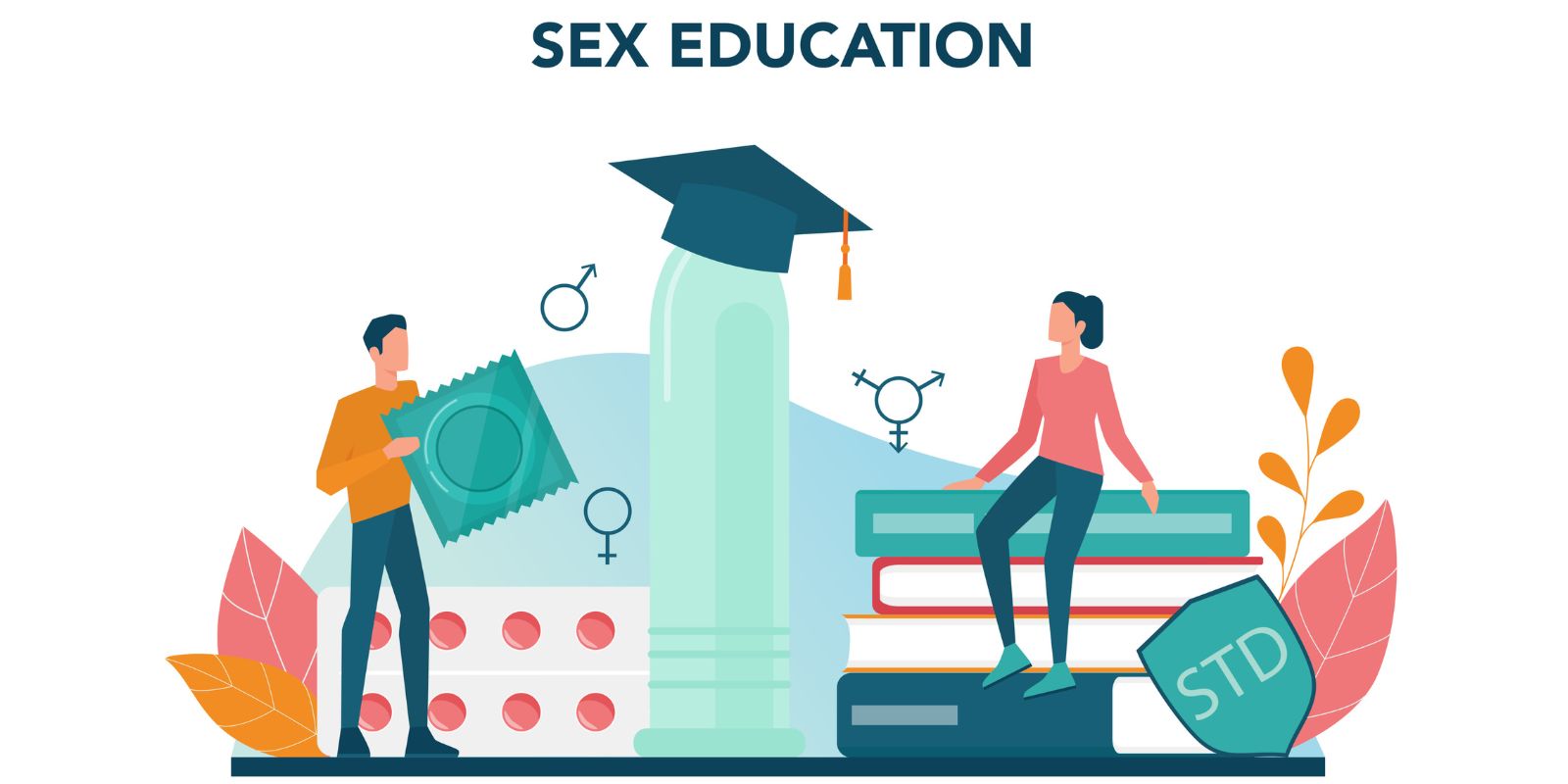What is Sexual Education?
Welcome, seekers of deeper connections—I’m Dr. Satish Bendigiri, your guide through the intersections of love, marriage, and personal growth. With roots in academia and the corporate world, I bring a unique lens to AdultSmart’s explorations of intimacy. Sexual education isn’t just facts. It’s a bridge to understanding ourselves and our partners. In my writings, I weave scholarly insights with real-life wisdom. This helps couples navigate desire with empathy and joy.
From ancient taboos to today’s open dialogues, sexual education evolves as society does. It equips us for fulfilling unions. Think of it as the foundation for marriages that thrive on trust and mutual respect. Drawing from global histories and modern curricula, we’ll unpack its layers. Ready to illuminate your path? Let’s begin with its rich evolution.
TOC – Sexual Education
- The Evolution of Sexual Education
- Core Pillars of Comprehensive Curricula
- Centering Consent in the Classroom
- Real-World Impacts and Ongoing Challenges
- Nurturing Growth Through Inclusive Learning
The Evolution of Sexual Education
Sexual education has transformed profoundly over centuries. Once shrouded in silence and taboo, it emerged in the late 19th century as “social hygiene” in North American schools. Progressive thinkers pushed for open talks on anatomy and health. This shift aimed to curb diseases and empower youth. By the mid-20th century, World War II accelerated change. Governments worried about youth vulnerability amid relocations and new freedoms. In the UK, official guidance urged schools to teach reproduction through everyday examples like livestock cycles.
Global histories reveal diverse paths. As detailed in this comprehensive Wikipedia overview, programs adapted to cultural needs. In Singapore, 1960s curricula focused on birth control to manage population growth. Socialist nations like East Germany emphasized family strengthening. The AIDS crisis in the 1980s added urgency worldwide. It spotlighted safe sex and STI prevention. Today, comprehensive models dominate. They blend facts with emotional growth. This evolution mirrors society’s embrace of sexuality as vital to well-being.
Core Pillars of Comprehensive Curricula
Comprehensive sexual education rests on key pillars. First, anatomy and reproduction form the base. Lessons cover bodies honestly, from puberty changes to conception processes. This builds body literacy early. Next, safe practices take center stage. Topics include contraception methods and STI risks. Age-appropriate info prevents myths and fears. Emotional aspects weave through all. They teach healthy relationships and boundary respect.
Open dialogues fuel self-discovery. As explored in our guide to sexual lifestyles, blogs and communities normalize diverse experiences. Curricula now include these voices. They address fetishes, orientations, and consent nuances. This inclusivity fosters empathy. It prepares learners for real-world intimacies.
Finally, rights and responsibilities anchor the framework. Students learn reproductive justice and age-of-consent laws. Programs stress mutual pleasure over performance. Evidence shows these pillars reduce teen pregnancies. They lower STI rates too. In essence, they nurture informed adults. Ready for loving, equitable partnerships.
Centering Consent in the Classroom
Consent forms the heartbeat of sexual education. It’s not a checkbox. It’s an enthusiastic, ongoing yes. Curricula must teach it early. From simple “Can I hug you?” to complex boundary talks. This builds empathy from the start. Students learn to read cues. Verbal checks become habit. No assumptions. Just clarity. This foundation prevents harm. It fosters respect in all relations.
In my counseling sessions, centering consent has transformed marriages profoundly. Couples rediscover trust through honest dialogues. One pair, long strained by unspoken needs, used role-play exercises to practice enthusiastic agreement. It reignited their spark. As outlined in our detailed consent guide, education demystifies the process. It turns vulnerability into strength. For educators, weaving consent into lessons creates safe spaces. It equips youth for equitable partnerships. True intimacy thrives here.
Real-World Impacts and Ongoing Challenges
Sexual education yields tangible benefits. Comprehensive programs slash teen pregnancy rates by up to 50 percent in some regions. They curb STI spread through accurate info. Studies show participants delay sexual debut. When active, they choose protection wisely. Emotional gains shine too. Learners report stronger communication skills. Healthier relationships follow. Inclusivity reduces isolation for LGBTQ+ youth. Overall, societies see empowered individuals. Thriving families emerge.
Yet challenges persist. Abstinence-only models falter. They ignore realities. Increase risks instead. Cultural resistance lingers in conservative areas. Teacher training gaps hinder delivery. Access varies by region. Urban schools outpace rural ones. For practical tools, Victoria’s resources at this state guide offer models. They emphasize partnerships with health experts. Scalable for diverse needs.
Addressing these demands advocacy. Push for mandatory, inclusive curricula. Fund ongoing teacher development. Integrate digital tools for reach. Monitor outcomes rigorously. In my work on marital growth, I’ve seen gaps firsthand. Bridging them unlocks potential. Sexual education isn’t optional. It’s essential for compassionate societies. Let’s champion its full promise.
Nurturing Growth Through Inclusive Learning
Inclusive sexual education nurtures holistic growth. It goes beyond facts to emotional intelligence. Lessons on empathy and self-awareness build resilient hearts. LGBTQ+ inclusion is key. Curricula must affirm diverse identities. This reduces stigma. Boosts mental health. Students learn love in all forms. From platonic bonds to romantic depths. Such education shapes ethical adults. Ones who honor differences. Foster genuine connections.
Looking ahead, innovation drives progress. Digital tools personalize learning. VR simulations teach consent dynamics. Global collaborations share best practices. In my explorations of marital growth, inclusive models shine. They help couples embrace fluidity. Evolve together. As societies diversify, so must education. Prioritize equity. Ignite lifelong curiosity. This path leads to compassionate worlds. Where love flourishes freely.

Key Takeaways
- Sexual education evolved from taboos to comprehensive programs, addressing global health crises like AIDS while adapting to cultural shifts worldwide.
- Core pillars include anatomy, safe practices, emotional relationships, and rights, promoting open discussions on diverse lifestyles for informed self-discovery.
- Consent education builds trust and respect, transforming personal and marital dynamics through enthusiastic, ongoing communication.
- Real impacts reduce pregnancies and STIs, though challenges like uneven access demand advocacy and better teacher training.
- Inclusive learning fosters emotional intelligence and LGBTQ+ affirmation, preparing youth for equitable, evolving relationships.
- Embrace sexual education as a tool for growth—start dialogues today to cultivate empathy and joy in every connection.
Frequently Asked Questions
What age should sexual education begin?
Ideally from early childhood, with age-appropriate basics on bodies and boundaries, building to comprehensive topics in adolescence for natural progression.
Does sexual education encourage early sexual activity?
No—evidence shows comprehensive programs delay debut and promote safer choices, focusing on empowerment over experimentation.
How can parents support school-based sexual education?
Engage in open home talks, review curricula, and model consent—reinforcing lessons strengthens family bonds and learning.
Why include LGBTQ+ topics in sexual education?
It affirms identities, reduces suicide risks among queer youth, and teaches inclusivity, fostering empathetic societies for all.
What’s the difference between comprehensive and abstinence-only education?
Comprehensive covers full sexuality for informed decisions; abstinence-only limits to delay, often increasing risks per studies.

Welcome Dr. Satish Bendigiri adultsmart expert! With a rich academic and corporate background, he passionately explores love, marriage, and growth in his articles.








Leave a Reply